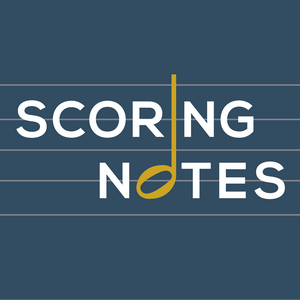Cleo Huggins, the designer of the first music font [encore]
We talk a lot about fonts on the Scoring Notes podcast. But there was a time when there were no music fonts. And then, there was one.
Cleo Huggins, on the staff of Adobe in 1986, designed Sonata, the very first music font. It’s hard to imagine today, but it was revolutionary at the time, and a leading industry publication called it the “Music Product of the Year”. Sonata provided the blueprint for the core music fonts later created for use in Finale and Sibelius, but it may surprise you to learn that Sonata was created without any one particular music software product in mind.
Cleo tells Philip Rothman and David MacDonald about her early studies with some of the great typographic experts of the 1970 and 1980s, and how her work in graphic design, 3-D animation, background as a violinist, and a key meeting with Steve Jobs about the launch of the first Macintosh computer all led to her taking responsibility for creating Sonata. Cleo discusses the revolution in PostScript technology and the introduction of the laser printer, and how that made it possible for her to create a high quality music font that was unconstrained by limitations of bitmapping.
She recalls the various sources of inspiration and research she did — everything from Bach’s manuscript to the Music Writer, to Notaset dry transfer sheets — and the process of regularizing beautiful calligraphy without losing the distinctive elements of music notation. She also recalls thinking about all the minute details from careful placement to the key mapping of each character, and the feedback received from early music software pioneers eager to incorporate Sonata into their programs.
Cleo’s career moved on from Sonata to a variety of endeavors, all propelled by a deep curiosity and propensity to good, and we talk about that too — and ask her if she’d ever come back to the world of music fonts, with all of the progress that has taken place in the nearly four decades since her groundbreaking work transformed the history of music notation.
More on Scoring Notes:
Music Type Foundry fonts newly revised and re-released
Download and install all Finale fonts on Mac and Windows
MuseScore Studio 4.6 adds full SMuFL support, other engraving and playback updates
Cantorum, a plainchant font for Dorico
Introducing Lelandia, a new suite of music fonts for Sibelius
Daniel Spreadbury on music fonts: past, present, and future
Music fonts and open standards with Daniel Spreadbury
A brief history of music notation on computers
Back to the future of music notation on computers
How to make a SMuFL font
A fount of fonts at Notation Central
Introducing the Norfolk and Pori chord symbol fonts for Sibelius — and an angled slash variant
From the Finale Blog:
Meet Steve Peha, creator of Petrucci, Finale’s first music font
A brief history of Finale fonts


